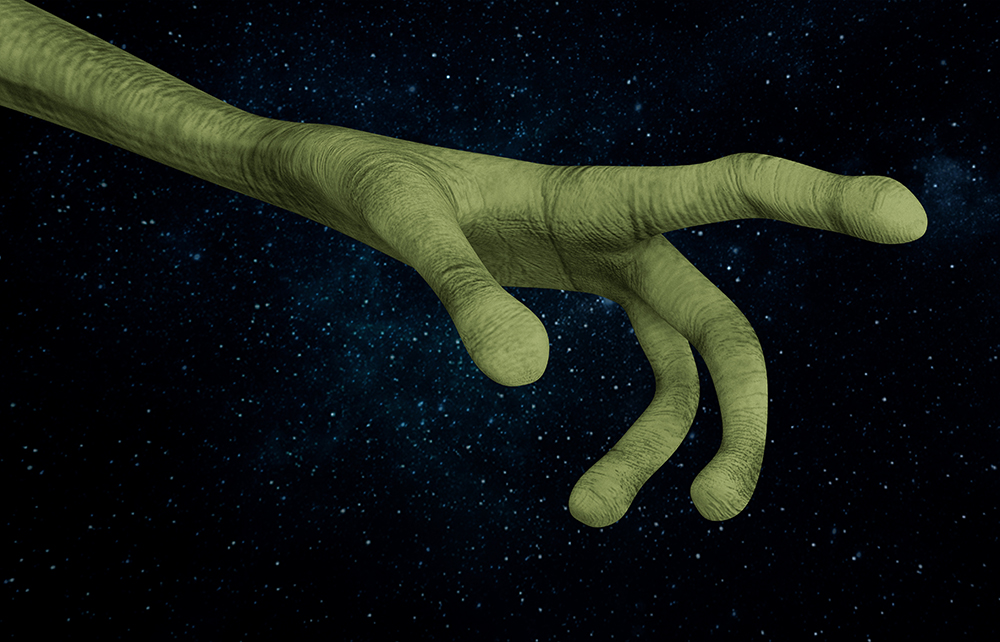In 1928, a young physicist and engineer named Karl Jansky began working at Bell Telephone Laboratories, tasked with investigating any sources of static that could interfere with long-distance radio communication. Cobbling together a system of antennae on a merry-go-round, he successfully found that thunderstorms were annoying in just this way. But there was a small bit of noise left over, and he kept scanning the sky to locate the culprit. To his surprise, he eventually found it was coming from Sagittarius in the centre of the Milky Way. He christened it ‘star-noise’. We now know that he had correctly identified the emanations from a supermassive black hole; and, quite by accident, he had invented the new science of radio astronomy.
Chris Lintott’s book, an amiable advert for serendipitous wonders, is concerned in part to overturn a certain naive view of science: that it consists of forming hypotheses and then testing them. Quite as often, the author – an Oxford astrophysicist and presenter of The Sky at Night – points out, it consists of the opposite: observing unexpected things and then scrabbling around for possible explanations.
In astronomy, indeed, this seems to be the rule rather than the exception. When the Hubble space telescope was first pointed at a tiny patch of seemingly empty space and left to expose its sensors for 100 hours, not much was expected of the exercise. But the resulting picture – the first Hubble ‘deep field’ image – was almost sickening in its unfathomable majesty, a teeming riot of extremely distant (and therefore very young when their light was emitted) galaxies of hitherto unexpected shapes: ‘twisted discs, bizarre, sharp-angled systems’, and one ‘like a strange species of porcupine’. Taking a punt on a long exposure in this way, Lintott relates, ‘changed the way that astronomy was done’ from then on.
Each such case study is given a chapter in this highly approachable and elegantly explained book, and surprisingly many of them involve someone suggesting little green men as an explanation for a cosmic anomaly. You may remember a couple of the most recent. The first ever interstellar object to be identified arriving in our solar system was christened Oumuamua upon its appearance in 2017. It seemed to be a long cigar shape, tumbling in an odd fashion, and unlike any previously observed asteroid or comet. At least one scientist, the Harvard astronomer Avi Loeb, decided it was most likely to be an alien spacecraft. (Lintott is gently but firmly sceptical.)
Meanwhile, the strange pattern of dimming observed by the astronomer Tabetha Boyajian in a star that now bears her name was spectacularly attributed by one published paper to an ‘alien megastructure’ in the form of a sphere of energy-collecting material placed around it by an advanced and power-hungry civilisation. Lintott thinks it more prosaically to be the rubble of a planet ripped apart by straying too close to its sun.
Such examples may illustrate less the likelihood of extraterrestrials than the certainty that any scientist invoking aliens will get a lot of calls from journalists, though at least one has not been satisfactorily explained in nearly half a century — the celebrated ‘Wow! signal’ of a single defined radio burst picked up in 1977 by the aptly named Big Ear telescope in Ohio. Readers of Cixin Liu’s magnificent Three Body trilogy of speculative novels will have cause to hope we didn’t secretly reply, or a vast hostile fleet might already be on its way.

Lintott succeeds in making as exciting, in any case, the other more purely scientific accidental discoveries: checking routine magnetometer readings revealed, via the Cassini probe, that Saturn’s moon Enceladus has a huge subsurface ocean; crowd-sourcing planet-survey data resulted in the discovery of one brave rock that orbits not one but four stars. Though our neighbour the hothouse planet Venus has long been assumed to be completely hostile to life, astronomers recently checking its atmosphere for a molecule known to be produced on Earth only by life (mostly, as it happens, inside penguins) seem to have found it, implying a potential population of airborne algae.
This is a splendid book, even if the author does exhibit a weakness for bad jokes in footnotes in the manner of a groovy professor trying to make his subject sound fun. It is fun enough already, especially given the variety of crackpot notions seriously entertained by star-nerds, such as the proposal that we should immediately demolish the planet Mercury and use its material to build a vast array of solar panels in close orbit around the Sun. Fear not, however: this probably won’t happen soon, especially if a hitherto undiscovered species of little green nimbys hear about it.







Comments